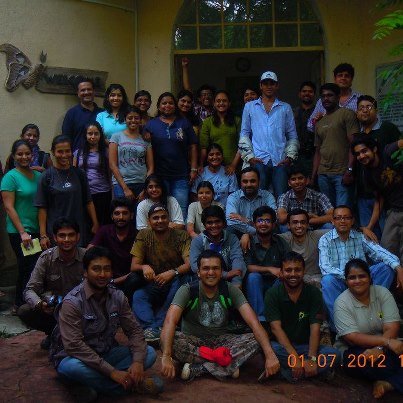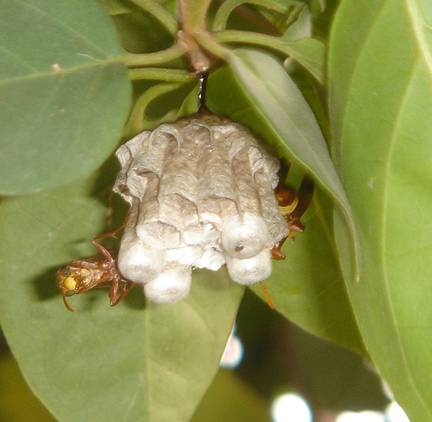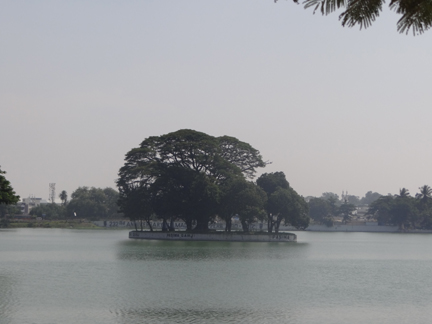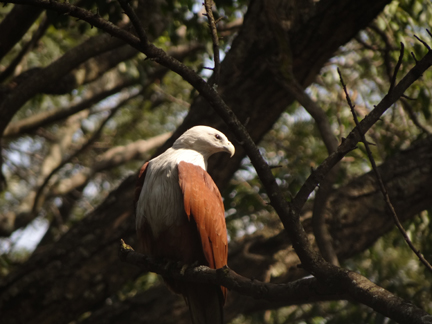Calendar of the month
RagooRao from
Mysore has done some beautiful digital paintings, which we have converted into monthly calendars. Please download these calendars free and use them as your desk top wall paper.
By clicking on RagooRao's name, you can read the numerous articles he has written for IndianWildlifeClub.com. He is also a superb nature photographer.
To download the calendar suitable for the size of your desktop, please click on the link below.
http://www.indianwildlifeclub.com/Calendar/MonthlyCalendar.aspx

|
Environment Education
Pooja Bhale with email prbhale@gmail.com has sent the following message
Could you please share this on your website. Thank you.
Enrolments have begun for the Certificate Course in Ecology, Ethology and Conservation
Organiser: Protecterra Ecological Foundation
Course Duration: 3 Months
Commencing: January 2013
Ending: March 2013
Openings: 15 Students
Location: In Field and Open World Community Centre Pune
Age Group: Anyone above 16
Target Group: Anyone interested in learning about geology, animal behaviour, basics of environment, cultural impact on our environment, economics of conservation and conservation in practice is applicable to enrol for this course.
Certification: PEF will issue a certificate upon completion of the course and all coursework required as well as satisfactory attendance
Faculty: Conservation Biologist Pooja R. Bhale and renowned guest lecturers.
PEF will ensure that this course will provide students with the required intellectual motivation and satisfaction of studying in a field of their choice. On completion, students will be given a certificate and placement assistance to help them turn their passion
into profession.
Check https://www.facebook.com/groups/135697619842131/ for more details....
|
Environment Education
Online Environmental Courses from BNHS-Now at reduced rates!
Last date for applying 15th January 2013
The Leadership Course in BiodiversityConservation is a one year Certificate Program with online and face to face activities interwoven through the course
work. The course content is developedby BNHS. The second one year program being offered is the Basic Entomology Course.
For applying online and avail of your 5% discount on course fee as IWC member, click on the link below
http://www.indianwildlifeclub.com/Courses/BNHS/OnlineCourses.aspx
Alternately, go to home page of IndianWildlifeClub.com and click on the banner in the middle.
Here is a picture of the group currently doing the LCBC course May 2012 to June 2013.

|
Gardening for wildlife
Gardening for wildlife
-Susan Sharma
Organic gardening attracts wildlife.
Wildlife is all around us and they can entertain and educate us if only we stop to look around. When we make friends with bees, butterflies ans birds not to speak of frogs, snakes ans lizards, a whole new world opens up.
Whether you have a small city garden, a big country one, a farm or a high-rise balcony - there is so much that can be done to support the wildlife all around us.

Blue pansy butterfly on chrysanthemum flower
In today's world where we are worried about pollution in air, water and soil, is it not high time that we started paying some attention to all these? It is good to make a beginning with our own house garden which we are in control of.
A study by Centre for Science and Environment has shown that as per an average diet of daily intake of various foods, we will be exceeding the ADI (Acceptable Daily Intake) of pesticides by approximately 400%! Isn't it time we paid more attention to what goes
into our food? And what better way to learn than grow some vegetables in our garden.
Managing Pests without Pesticides
Pesticides being used become ineffective in no time since such a use allows for insects to be selected for genetic resistance rather than controlling them. The alternative now being marketed, which has much serious consequences, are the genetically
engineered crops that are released as well as lined up for release.
Biodynamic farming and permaculture
Under Non-Pesticidal Management, the primary focus is on replacing the external inputs with the local knowledge, management skills, labour and effective utilisation of natural products and processes that are locally available. The farmers understand the pest
biology and life cycle and modify crop management practices to keep the insect population under check, and stop insects from reaching a pest status.
In the four stages of the life cycle, insects damage the crop only in one stage (larval stage in most of the cases) — at least two of the stages are immobile (egg and pupa). The adult stage will not be on the crop. There are several options available to control
them at each of the stages, mostly using local resources.
Many of the insects that live in our gardens are beneficial. They creep around our plants and gobble up aphids and caterpillars and the like. Therefore, it stands to reason that if we increase the number of beneficial insects in our gardens, then we will decrease
the pests.

A wasp nest-wasps are most beneficial in reducing pests
If you have to use pesticide, use a natural pesticide like "neem oil". Neem oil is commercially available in good garden stores. Other natural fungicides are vinegar, red chillies, a freshly made chutney of shareefa(custard apple) leaves etc.
We want to find inspirational stories of families who have turned their small patch into wildlife friendly spaces.
The idea is to find amazing wildilfe gardeners, so that the others can follow their lead and make their gardens wildlife friendly too. Tell us how you control pests and grow healthy vegetables with no chemicals. If you’ve put in a pond, built a rockery,
assembled a log pile or done anything whatsoever to discover the amazing wildlife living on your doorstep, your story could help inspire other families to do the same. If you want to share your experiences, then please contact susan_sharma@hotmail.com.
We hope to keep this new series on 'gardening for wildlife' going with experiences of our members. Please do write -in.
|
Members Speak
Amrita Neelakantan, a wildlife conservationist, is part of the third round of the SciFund Challenge, an experiment in crowd funding for scientific research. Amrita is raising money from individuals to fund her research in tropical forest landscapes.
The SciFund Challenge was founded by two ecologists, Jai Ranganathan and Jarrett Byrnes, to explore the potential of crowd funding—through which interested individuals, usually via the Internet, pool their donations—to support scientific research and connect
scientists more directly to the general public.
Amrita seeks to raise $7,500 for logistic costs of a field season (equipment and supplies) she will use in her study of patterns of forest animal responses to habitat changes (quantity of habitat and quality of habitat).
Frogs and beetles. Amrita’s project "The Science of Small Things" explores the interactions between forest inhabitants that are sensitive to changes in their surrounds and perform key functions to keep ecosystems healthy. “Frogs, small reptiles, butterflies,
forest birds and dung beetles form communities that are highly responsive to change in their environments. They provide a window into how long it takes for the armies of smaller animals to continue to provide for everything higher up the food chain in stable
populations across smaller and more degraded forests.”, Amrita wrote in her SciFund Challenge project description.
Amrita will be looking at the responses of communities of frogs and beetles to habitat gradients. Basically, she will attempt to document the patterns and time it takes for ecosystem to recover when forests are degraded. These patterns are necessary to plan
for the future – keeping in mind forest services provided to human life as we know it and the management of natural resources for decades to come. There are too few studies that track these patterns over a long enough time and a large enough area to provide
robust knowledge of how animals cope with changing ecosystems.
“There has been tremendous good will and people are willing to pitch in. Plus this is a fantastic opportunity to involve people in my research and to give directly to a project without large overhead costs” said Amrita. As gratitude for contributions there
are rewards, for contributions of 1000 USD or more Amrita offers the contributor a chance to visit her field site for a week.
For Amrita's SciFund Challenge proposal, see
http://www.rockethub.com/projects/11901-the-science-of-small-things
|
Story Of The Month
Bringing back nature into the city of Bangalore
-Text and photographs Susan sharma
Ulsoor lake is an artificial lake built by Kempe Gowda in the 16th Century. Once overgrown with water hyacinth and forgotten by the Bangaloreans caught in the whirlpool of development, the lake has been slowly nurtured back to life thanks to the persistent
efforts of Save Ulsoor lake foundation. Indian Institute of science, Bangalore, in a report, had estimated that the lake is silted to about 50 per cent of its actual depth and that the quantity of silt on the lake bed is about five lakh metric tonnes.

Ulsoor Lake, Bangalore
On a recent visit to Bangalore, I walked alongside the lake, taking in flowering plants which discourage plastic throwers ( which litter many roadsides converting this garden city into a garbage city). I was thrilled to see striped tiger butterflies and common
castors flitting around the flowers.

Common Cormorant
A common cormorant looked up eagerly after catching a fish in the lake.
The small island at the centre of the lake harbored large colonies of cormorants.

Brahminy kite
A Brahminy kite swooped down to catch fish, confirming that the lake water was good enough for fish to thrive.
A small portion of the lake, still overgrown with weeds was neatly segregated with bunds all around, preventing the weeds from spreading further.
A bigger surprise was the step well just behind Keningston Bus Stop which was getting "unveiled" practically in front of our eyes. Trucks were removing filth and garbage continuously, as the step well was obviously camouflaged over the years under debris.

Ulsoor lake Step well
A step well in Bangalore? I thought step wells existed only in Rajasthan! A friend who has been a resident of Bangalore for long, exclaimed.
The king fisher sitting on a branch on the lake side confirmed that nature does spring back and respond well to peoples efforts!

King Fisher
|
Web Page
Dear IWC member,
Better late than Never, they say. We are doing an Ease of Use Survey of our website-almost ten years after the latest make over.
Why now, you may ask?
We are planning adding some more features to our portal
-helping you to connect with other members of the Club
-Creating the Wilderness Conservation exchange ....
Before we embark on these projects, we would like to go back to the drawing board once again, this time with specific inputs from you.
Please respond to the ten questions in our survey (It will take just a couple of minutes to complete the survey!)
Here is the survey link
http://www.surveymonkey.com/s/XYDLRLF
It will only take two minutes to respond. We hope to give you a better interactive experience with our nature club based on your suggestions.
Thank you,
Team IWC
|
Wilderness Volunteers
"Team of Volunteers Required for Tiger Reintroduction Projects in WII
Posted By:kramesh_wii in yahoo group
Work Description: The project involves monitoring and evaluation of reproductive potential of reintroduced tiger populations in Sariska (Rajasthan) and Panna (Madhya Pradesh) Tiger Reserves. Data collection include
radio-tracking of
tiger, camera trapping of tiger and co-predators, line transect for estimating prey density, plot sampling for quantification of vegetation and anthropogenic parameters, and scat collection for quantification of hormones and DNA.
Area: The study is primarily executed in Panna and Sariska Tiger Reserve have been reintroduced, but data collection would also be done in Ranthambore, Kanha, Pench and Bandhavgarh Tiger Reserves which are the source
for the reintroduced tiger populations.
Duration: Three-Four Months (10th January 2013 onwards) and extendable depending on the performance of candidates.
Requirements: The applicant must hold at least a bachelor's degree, with interest in wildlife science and conservation. Candidates with a prior experience of carrying out field data collection as mentioned above would be given preference.
Compensation & Benefits: The selected candidates will be provided with travel and lodging support during the work period. In addition, some emolument will also be given for meeting other basic requirements. Interested
candidates are required to respond through email to manjari.malviya@gmail.com with a copy to ramesh@wii.gov.in
The email should include CV, Statement of Interest and duration of commitment.
The closing date for receiving application is 05 January 13. However, it is encouraged to send in the application sooner, so that the field work opportunity could be advanced."
|